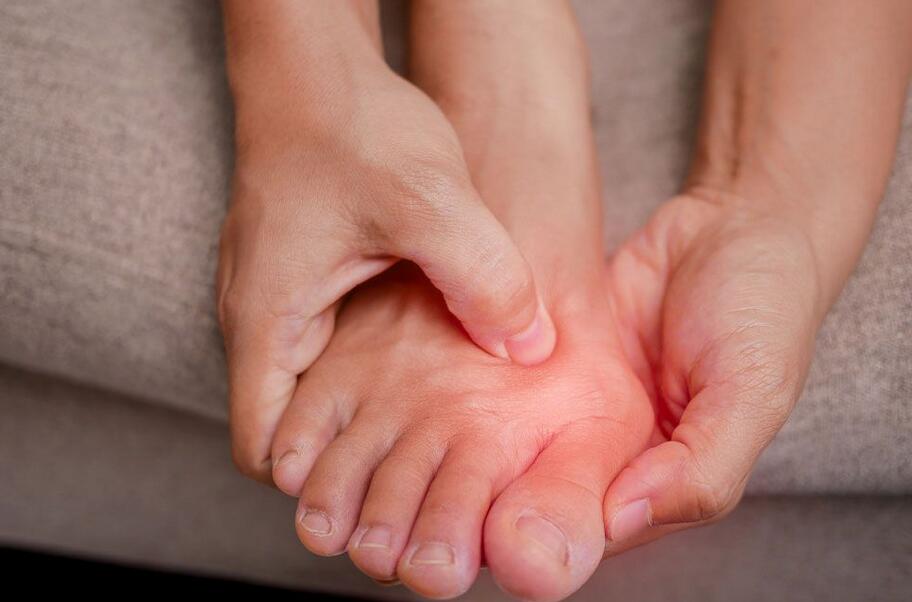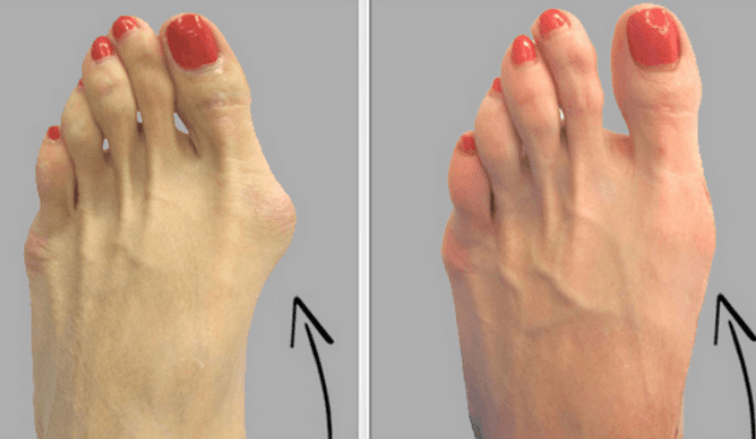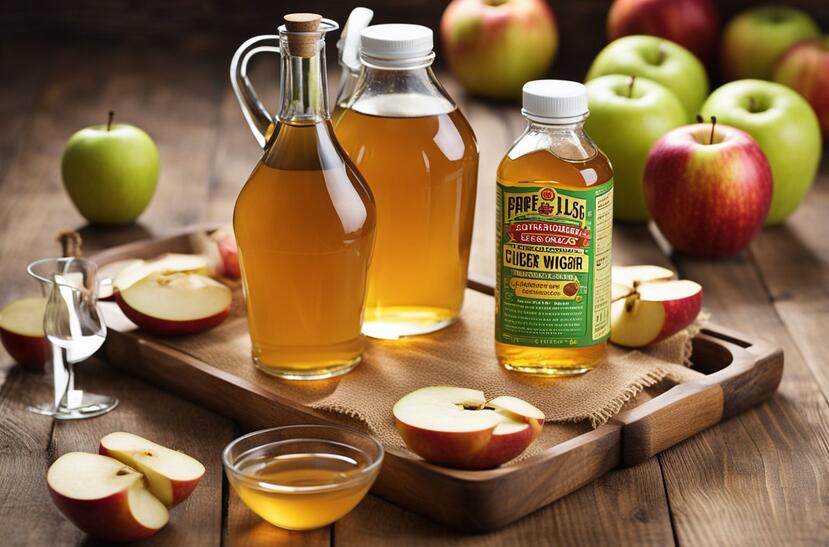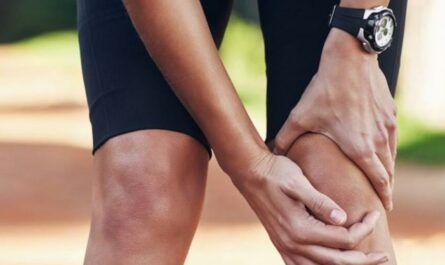Experiencing pain on the top of the big toe joint can be a frustrating and uncomfortable condition. This type of pain can significantly impact daily activities, such as walking or wearing shoes. This condition usually has several causes, including gout, arthritis, or injury. It is essential to identify the underlying cause to determine the most effective treatment approach. This article will explore the common causes of pain on the top of the big toe joint and provide insights into potential remedies.

Anatomical Overview of the Big Toe Joint
To comprehend the causes and treatment of pain on top of the big toe joint, it is essential to have a basic understanding of the anatomy of the joint itself.
The big toe joint, also known as the first metatarsophalangeal joint (MTP), is a hinge joint that connects the first metatarsal bone to the proximal phalanx bone of the big toe. This joint plays a significant role in maintaining balance, stability, and propulsion during walking and other weight-bearing activities.
The proper alignment and mobility of the big toe joint are crucial for pain-free movement. Any disruptions or abnormalities in the structure or function of the joint can lead to discomfort and pain.
Symptoms of Top of Big Toe Joint Pain
Individuals experiencing pain on top of the big toe joint may exhibit various symptoms, including:
- Pain or tenderness on the top of the big toe joint
- Swelling or inflammation around the joint
- Limited range of motion
- Difficulty walking or bearing weight on the affected foot
- Stiffness or a feeling of stiffness in the joint
- Redness or warmth in the area
Common Causes of Pain on Top of Big Toe Joint
Pain on top of the big toe joint can be attributed to various underlying causes. Understanding these causes can help in identifying the source of the pain and determining the appropriate treatment approach. Here are some common causes of pain on top of the big toe joint:
1. Arthritis
Arthritis is a common cause of pain in the big toe joint. Osteoarthritis, the most prevalent form, occurs due to the breakdown of cartilage in the joint over time. This can lead to pain, stiffness, and reduced range of motion.
Rheumatoid arthritis, an autoimmune disease, causes inflammation and joint damage, including the big toe joint. It can result in swelling, warmth, and deformity of the affected joints.
Gout, another type of arthritis, occurs due to the buildup of uric acid crystals in the joint. The big toe joint is a common location for gout attacks, resulting in sudden and severe pain, redness, and swelling.
2. Turf Toe
Turf toe is a common injury among athletes, particularly those who engage in sports played on artificial turf, such as football or soccer.
It happens when the big toe is forcibly bent upward beyond its normal range of motion, causing a sprain or damage to the ligaments surrounding the joint. This can result in pain, swelling, and difficulty with push-off while walking or running.
3. Sesamoiditis
Sesamoiditis refers to inflammation of the sesamoid bones, two small bones located beneath the big toe joint. These bones act as a pulley system, providing leverage and stability to the big toe joint.
Overuse or repetitive stress, often seen in activities like dancing or running, can lead to inflammation and pain in the sesamoid bones. Symptoms include pain on the top of the big toe joint, swelling, and difficulty bearing weight on the foot.
4. Metatarsalgia
Metatarsalgia is a condition characterized by pain and inflammation in the ball of the foot, which can radiate to the big toe joint. It commonly occurs due to excessive pressure on the foot, such as wearing improper footwear or engaging in high-impact activities. The pain can feel like a burning or aching sensation and worsen with walking or running.

5. Bunions
Bunions are bony deformities that develop at the base of the big toe joint. They often result from a combination of genetic factors, abnormal foot mechanics, and wearing tight or ill-fitting shoes. Bunions cause the big toe to deviate inward, leading to pain, swelling, redness, and difficulty finding comfortable footwear.
6. Capsulitis
Capsulitis is the inflammation of the ligaments surrounding the big toe joint. It can occur due to repetitive stress, trauma, or abnormal foot mechanics, such as a weakened or imbalanced foot arch. Capsulitis causes pain and tenderness on top of the big toe joint, and the pain may worsen when walking or wearing tight shoes.
7. Stress fractures
Stress fractures are small cracks in the bones that typically result from overuse or repetitive stress. This connects to the big toe joint, which can cause pain on top of the joint.
Athletes who engage in activities that involve repetitive impact, such as running or jumping, are more prone to stress fractures. The pain may worsen with activity and subside with rest.
8. Nerve impingement
Compression or irritation of the nerves that supply the big toe joint can lead to pain on top of the joint. Morton’s neuroma, a common nerve condition, occurs when the tissue surrounding the nerves thickens, causing pain, tingling, or numbness in the toes.
Nerve entrapment syndromes, such as tarsal tunnel syndrome, can also cause nerve-related pain on top of the big toe joint.
9. Infections or injuries
Infections, such as cellulitis or osteomyelitis, can cause pain on top of the big toe joint. These infections typically result from bacterial entry points, such as cuts or wounds, and can lead to redness, warmth, swelling, and severe pain.
Additionally, direct trauma or injuries to the joint, such as fractures or dislocations, can result in significant pain, swelling, bruising, and difficulty moving the joint.
10. Gout
Gout is a type of arthritis that can cause excruciating pain, particularly in the big toe joint. The main cause of this pain is the buildup of uric acid crystals in the joints.
Uric acid is a waste product that is normally filtered out by the kidneys and excreted in urine. However, in people with gout, the body either produces too much uric acid or has difficulty eliminating it. As a result, the uric acid forms sharp crystals that accumulate in the joints, leading to inflammation and intense pain.
11. Hallux Limitus/Rigidus
Hallux limitus refers to restricted mobility of the big toe joint due to arthritis or structural issues. This indicates a stiff, frozen joint unable to move through its normal range of motion. The rigid, bone-on-bone rubbing results in localized pain and inflammation on top of the big toe joint as it tries to bend with walking.
12. Osteochondritis Dissecans
This condition occurs when bone underneath the cartilage separates from its surrounding region due to repetitive stress and poor blood supply. It most often affects the knee but can rarely occur in the big toe joint. Pain, catching sensations, and joint weakness result. Detached cartilage may become loose in the joint space.
10 Best Home Remedies for Pain on Top of Big Toe Joint
1. Epsom Salt Soak

Soaking your foot in warm water with Epsom salt can provide multiple benefits for pain on the top of the big toe joint. Epsom salt, also known as magnesium sulfate, helps reduce inflammation and ease muscle tension. The warm water also promotes blood circulation, which can aid in healing.
To prepare an Epsom salt soak, fill a basin or tub with warm water and add half a cup of Epsom salt. Stir well to dissolve the salt. Then, immerse your foot in the water and soak for 15-20 minutes. You can repeat this remedy daily or as needed for relief.
2. Ice Pack
Applying an ice pack to the affected area can effectively numb the pain and reduce swelling. Ice helps constrict blood vessels, which in turn reduces inflammation and provides temporary relief.
To make an ice pack, wrap a few ice cubes in a thin towel or place them in a plastic bag. Apply the ice pack directly to the top of your big toe joint for 10-15 minutes. Make sure to avoid direct contact with the skin to prevent ice burn. Repeat this remedy several times a day, especially after activities that might aggravate the pain.
3. Turmeric
Turmeric is a natural remedy with powerful anti-inflammatory properties. Curcumin, the active compound in turmeric, helps reduce pain and swelling associated with various joint conditions.
To utilize turmeric for pain relief, mix one teaspoon of turmeric powder with a few drops of water to form a paste. Apply the paste directly to the painful area on top of your big toe joint and let it sit for 30 minutes. Afterward, rinse off the paste with warm water. Repeat this remedy daily until you experience relief.
4. Ginger
Ginger is another excellent anti-inflammatory ingredient that can help alleviate pain on the top of the big toe joint. It contains gingerol, a compound known for its analgesic and anti-inflammatory properties.
To make ginger tea, grate a small piece of ginger and boil it in water for approximately 10 minutes. Strain the liquid and drink it as a tea. You can add honey or lemon for additional flavor. Alternatively, you can apply ginger oil topically to the affected area and gently massage it in for relief.

5. Apple Cider Vinegar
Apple cider vinegar has alkalizing properties that can help reduce pain and inflammation. It also contains acetic acid, which may help break down uric acid crystals that can contribute to joint pain.
To use apple cider vinegar for pain relief, mix equal parts of apple cider vinegar and warm water. Soak a clean cloth in the mixture and wrap it around your big toe joint for 15-20 minutes. This remedy can be repeated twice a day to experience the benefits.
6. Massage
Massaging the area around the big toe joint can help improve blood circulation, reduce muscle tension, and alleviate pain. It also promotes the release of endorphins, which are natural pain relievers.
To massage the affected area, use a massage oil or cream and apply gentle pressure in circular motions. You can also use your thumb and fingers to knead the muscles around the joint. If possible, consider seeking professional foot massage therapy for more targeted relief.
7. Elevation
Elevating your foot can help reduce swelling and relieve pressure on the affected joint. By placing your foot on a pillow or cushion while resting, you promote proper blood flow and reduce inflammation.
When elevating your foot, make sure it is positioned above the level of your heart. This can be done while sitting or lying down. Elevate your foot for at least 20 minutes, several times a day, to experience the benefits.

8. Proper Footwear
Wearing comfortable and supportive shoes is crucial for managing pain on the top of the big toe joint. Opt for shoes with a wide toe box to allow enough room for your toes to move freely. Tight-fitting or narrow shoes can worsen the pain and increase pressure on the joint.
Look for footwear that provides adequate arch support and cushioning. Consider using shoe inserts or orthotics to further support your feet and alleviate pressure on the big toe joint.
9. Weight Management
Maintaining a healthy weight is essential for reducing stress on your joints, including the big toe joint. Excess weight can contribute to increased pain and inflammation, as it adds additional pressure to the affected area.
Incorporate regular exercise into your routine to help manage your weight and strengthen the muscles around your joints. Combine cardiovascular exercises with strength training to support overall joint health.
Additionally, follow a balanced diet that includes plenty of fruits, vegetables, lean proteins, and whole grains to maintain a healthy weight.
10. Hot and Cold Therapy
Alternating between hot and cold therapy can provide relief from pain and reduce inflammation. Hot therapy helps improve blood flow and relax muscles, while cold therapy numbs the area and reduces swelling.
Start by applying a warm compress or hot water bottle to the affected area for 10 minutes. Follow this with a cold compress, such as an ice pack, for 5 minutes. Repeat this cycle a few times, ending with the cold compress. Perform this therapy a few times a day, as needed, to alleviate pain and reduce inflammation.
Lifestyle Changes to Prevent Big Toe Joint Pain
Making some adjustments to protect your foot health may help avoid recurring problems with joint pain:
- Wear proper-fitting shoes with cushioned soles and adequate room in the toe box when walking or exercising.
- Add gel padding or toe cushions to protect the joint. Consider orthotics.
- Stretch the toes and calves routinely to increase flexibility.
- Strengthen foot and leg muscles with exercise.
- Lose excess weight to avoid overloading the joint.
- Avoid high-impact activities that stress the joint like running and jumping. Switch to swimming or cycling.
- Monitor health conditions like diabetes and arthritis that increase the risk for foot issues.
- Have a podiatrist evaluate any foot or leg alignment problems.
- Treat injuries promptly and give them adequate time to heal.
- Use proper form and footwear for athletic activities.
When to Seek Medical Attention?
It is important to seek medical attention if you are experiencing severe or persistent pain on top of the big toe joint, or if the pain is interfering with your daily activities.
Additionally, if you notice any signs of infection, such as increased redness, warmth, or drainage from the affected area, it is advisable to consult with a healthcare professional promptly.
Early intervention and proper diagnosis can help prevent further complications and ensure appropriate treatment is provided.






